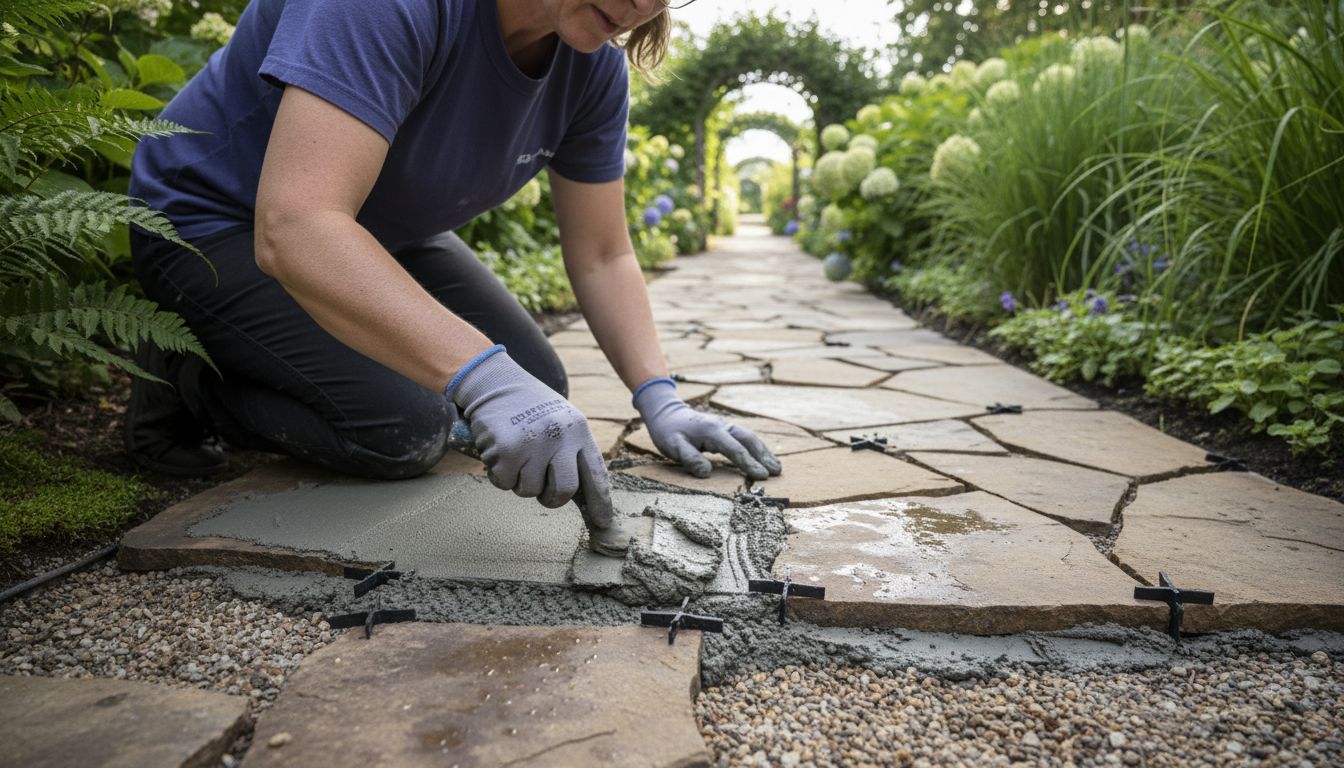
The Essential Guide to Why Use Exterior Tiles
Share
Outdoor surfaces face some of the toughest demands, with exterior tiles required to endure everything from pounding rain to freeze-thaw cycles. For homeowners and property managers, choosing the right tile goes beyond appearance. This decision shapes safety, drainage, and even long-term maintenance costs. Clear insight into tile types, durability, installation, and hidden costs helps you create outdoor spaces that stay attractive and functional through every season.
Table of Contents
- Defining Exterior Tiles And Core Uses
- Types Of Exterior Tiles For Outdoor Spaces
- Durability And Weather Resistance Factors
- Installation And Maintenance Requirements
- Cost Considerations And Long-Term Value
- Common Pitfalls When Choosing Outdoor Tiles
Key Takeaways
| Point | Details |
|---|---|
| Durability is Crucial | Exterior tiles must withstand various environmental conditions; consider materials that offer high resistance to moisture, temperature fluctuations, and UV radiation. |
| Material Selection Matters | Choose the right tile type based on usage, climate, and maintenance needs to ensure lasting aesthetic and functional performance. |
| Proper Installation is Essential | Meticulous substrate preparation and adherence to installation protocols significantly impact the durability and longevity of outdoor tiles. |
| Consider Long-Term Costs | Evaluate total ownership costs, including installation and maintenance, to make strategic investments and enhance property value. |
Defining Exterior Tiles and Core Uses
Exterior tiles are specialised hard-surface coverings designed specifically for outdoor environments, engineered to withstand challenging external conditions while providing functional and aesthetic benefits. Unlike standard indoor tiles, exterior tiles are manufactured to resist weather extremes, heavy foot traffic, temperature fluctuations, and potential moisture exposure.
According to the UK Government’s Building Safety Regulator, exterior tiles play a critical role in managing external wall materials and surfaces. These tiles serve multiple core purposes across residential and commercial spaces:
- Creating durable walkways and pathways
- Designing functional outdoor living areas
- Enhancing landscape aesthetics
- Providing slip-resistant surface solutions
- Managing water drainage and runoff
The UK Government’s guidance on permeable surfacing emphasises that exterior tiles are not just decorative elements but strategic components in landscape design. They help manage rainfall effectively, reduce water runoff, and contribute to sustainable urban drainage systems. Modern exterior tiles come in various materials like porcelain, natural stone, and ceramic, each offering unique performance characteristics tailored to different environmental requirements.
These versatile surfaces transform outdoor spaces from mere functional areas into visually compelling extensions of architectural design.
 Whether used in patios, garden walkways, pool surrounds, or commercial landscaping, exterior tiles represent a sophisticated solution that combines durability, aesthetic appeal, and practical functionality.
Whether used in patios, garden walkways, pool surrounds, or commercial landscaping, exterior tiles represent a sophisticated solution that combines durability, aesthetic appeal, and practical functionality.
Types of Exterior Tiles for Outdoor Spaces
Exterior tiles offer remarkable versatility, with multiple materials and styles designed to transform outdoor environments. The primary categories include porcelain tiles, natural stone tiles, ceramic tiles, and concrete tiles, each presenting unique characteristics suited to different landscaping requirements and aesthetic preferences.
Here’s a comparison of common types of exterior tiles and their key characteristics:
| Tile Type | Key Advantages | Typical Drawbacks |
|---|---|---|
| Porcelain Tiles | Very durable Low water absorption Frost resistant |
Higher initial cost |
| Natural Stone Tiles | Attractive appearance Long lifespan Natural texture |
Requires regular sealing Variable performance |
| Ceramic Tiles | Affordable Wide range of designs Easy installation |
Moderate weather resistance May require more maintenance |
| Concrete Tiles | Strong impact resistance Customisable shapes Cost-effective |
Can degrade over time May stain easily |
According to the South Downs National Park Authority, clay and slate tiles represent sophisticated options for exterior applications. These materials provide distinct advantages:
- Clay tiles: Exceptional durability and traditional aesthetic appeal
- Slate tiles: Natural texture with remarkable weather resistance
- Porcelain tiles: High density and minimal water absorption
- Ceramic tiles: Cost-effective and versatile design options
Innovative research from the University of Brighton highlights emerging sustainable approaches in tile production, including experimental materials like tiles crafted from waste oyster shells. This demonstrates the evolving landscape of exterior tile technology, where environmental considerations are becoming increasingly important.
Choosing the right exterior tile involves carefully evaluating factors like climate exposure, intended usage, aesthetic preferences, and long-term maintenance requirements. Whether you’re designing a contemporary patio, rustic garden pathway, or commercial outdoor space, understanding the unique properties of different tile types helps create outdoor spaces with lasting visual impact.
Durability and Weather Resistance Factors
Weather resistance represents the most critical performance metric for exterior tiles, determining their ability to withstand challenging environmental conditions. Exterior tiles must endure temperature fluctuations, moisture exposure, UV radiation, and mechanical stress without compromising their structural integrity or aesthetic appeal.
UK Government guidance on permeable surfacing emphasises the importance of selecting materials capable of managing water runoff and resisting environmental degradation. Key durability factors include:
- Water absorption rate
- Frost resistance
- Impact strength
- Chemical resistance
- Surface hardness
- Thermal shock tolerance
The South Downs National Park Authority recommends evaluating tile materials through comprehensive performance assessments. Different tile types exhibit varying resistance levels:
- Porcelain tiles: Exceptional durability, minimal water absorption
- Natural stone tiles: Variable performance, requires regular sealing
- Ceramic tiles: Moderate resistance, best for sheltered areas
- Concrete tiles: High impact strength, potential for surface degradation
Selecting exterior tiles demands careful consideration of local climate conditions, expected foot traffic, and maintenance capabilities.
 Understand your specific environmental challenges to ensure long-lasting, resilient outdoor surfaces that maintain their visual and functional qualities through changing seasons.
Understand your specific environmental challenges to ensure long-lasting, resilient outdoor surfaces that maintain their visual and functional qualities through changing seasons.
Installation and Maintenance Requirements
Successful exterior tile installation requires meticulous planning and precise execution, with substrate preparation representing the most critical initial step. Proper groundwork determines the long-term performance, stability, and durability of outdoor tiling projects, influencing everything from drainage capabilities to aesthetic longevity.
According to the University of Edinburgh’s Estates Design Guideline, comprehensive installation involves several essential stages:
- Thorough surface evaluation and levelling
- Appropriate moisture barrier implementation
- Selection of compatible adhesive systems
- Precise tile alignment and spacing
- Adequate joint and edge treatment
UK Government guidance on permeable surfacing emphasises the importance of ongoing maintenance to preserve tile performance. Recommended maintenance protocols include:
- Regular cleaning to prevent debris accumulation
- Annual inspection for potential damage or wear
- Prompt repair of any compromised areas
- Periodic resealing of natural stone tiles
- Grout line maintenance and restoration
Choosing professional installation can significantly enhance tile performance and longevity. Learn more about professional outdoor tile solutions to ensure your exterior spaces remain functional, attractive, and resilient against environmental challenges.
Cost Considerations and Long-Term Value
Total cost of ownership extends far beyond the initial purchase price of exterior tiles, encompassing installation expenses, maintenance requirements, and long-term performance potential. Homeowners and property developers must carefully evaluate the comprehensive financial implications of their tile selection to make informed, strategic investments.
According to the UK Government’s guidance on permeable surfacing, cost considerations should balance immediate expenditure with future value. Key financial factors include:
- Initial material costs
- Professional installation expenses
- Ongoing maintenance requirements
- Potential replacement or repair costs
- Energy and drainage efficiency
- Property value enhancement
The South Downs National Park Authority recommends a comprehensive approach to evaluating tile investments, emphasizing that higher upfront costs often translate to superior long-term value. Different tile materials present distinct cost-performance profiles:
- Porcelain tiles: Higher initial cost, minimal maintenance
- Ceramic tiles: Lower upfront investment, more frequent replacements
- Natural stone tiles: Premium pricing, requires periodic professional maintenance
- Concrete tiles: Moderate cost, potential surface degradation over time
Understanding the nuanced economics of exterior tile selection enables more strategic decision-making, ensuring your outdoor spaces deliver aesthetic appeal and financial practicality through intelligent material choices.
Common Pitfalls When Choosing Outdoor Tiles
Selecting exterior tiles requires nuanced decision-making, with critical mistakes potentially compromising both aesthetic appeal and functional performance. Homeowners and designers frequently encounter challenges that can lead to expensive repairs, premature degradation, or unsatisfactory outdoor spaces.
According to the UK Government’s guidance on permeable surfacing, the most prevalent pitfalls in tile selection include:
- Ignoring local climate conditions
- Underestimating substrate preparation requirements
- Selecting inappropriate material durability
- Neglecting proper drainage considerations
- Overlooking long-term maintenance needs
- Prioritizing aesthetics over functionality
The South Downs National Park Authority highlights additional critical selection errors that can significantly impact outdoor tile performance:
- Choosing tiles without considering environmental exposure
- Failing to assess slip resistance
- Selecting materials incompatible with existing landscape
- Underestimating installation complexity
- Ignoring potential thermal expansion issues
Understanding these potential design challenges allows homeowners to make more informed decisions, ensuring their outdoor spaces remain beautiful, functional, and resilient against environmental challenges.
Discover Durable and Stylish Exterior Tiles with Vividotiles
Choosing the right exterior tiles means balancing durability, weather resistance and design appeal to create outdoor spaces that last and impress. If you have faced challenges like selecting tiles that endure frost, moisture and heavy foot traffic while maintaining low maintenance and stunning style, Vividotiles offers exactly what you need. Our wide range of porcelain, natural stone and outdoor tiles provides solutions carefully crafted to meet the demands of UK climates, ensuring your garden paths, patios or commercial landscaping continue to perform beautifully.

Explore our collection now at Vividotiles where you can easily browse high-quality outdoor tiles with competitive prices and free UK delivery. Start your outdoor transformation with expert guidance and trusted products designed to resist weather and wear. Don’t wait until costly repairs arise — make a smart investment that enhances your property’s charm and longevity today by visiting our homepage and selecting your next outdoor tile project.
Frequently Asked Questions
What are exterior tiles used for?
Exterior tiles are used for creating durable walkways, designing outdoor living areas, enhancing landscape aesthetics, providing slip-resistant surfaces, and managing water drainage and runoff in various outdoor environments.
What materials are commonly used for exterior tiles?
Common materials for exterior tiles include porcelain, natural stone, ceramic, and concrete, each offering unique characteristics suited to different landscaping needs and aesthetic preferences.
How do I choose the right type of exterior tile for my project?
Choosing the right exterior tile involves evaluating factors such as climate exposure, intended usage, aesthetic preferences, and long-term maintenance requirements to ensure durability and visual appeal.
What maintenance do exterior tiles require?
Exterior tiles require regular cleaning to prevent debris accumulation, annual inspections for damage, prompt repairs of compromised areas, periodic resealing for natural stone tiles, and grout line maintenance to preserve their performance and appearance.
Recommended
- Complete Guide to the Role of Tiles in Outdoor Design - Vivido Tiles
- Outdoor Tiles : Understanding Their Benefits and Uses - Vivido – Vivido Tiles
- Complete Guide to Outdoor Tiles for UK Projects - Vivido Tiles
- Outdoor tiles Oasis: Transform Your Space with Stunning porcelain – Vivido Tiles
- 7 Essential Types of Roofing Materials for Your Home - Liberty Roofworks